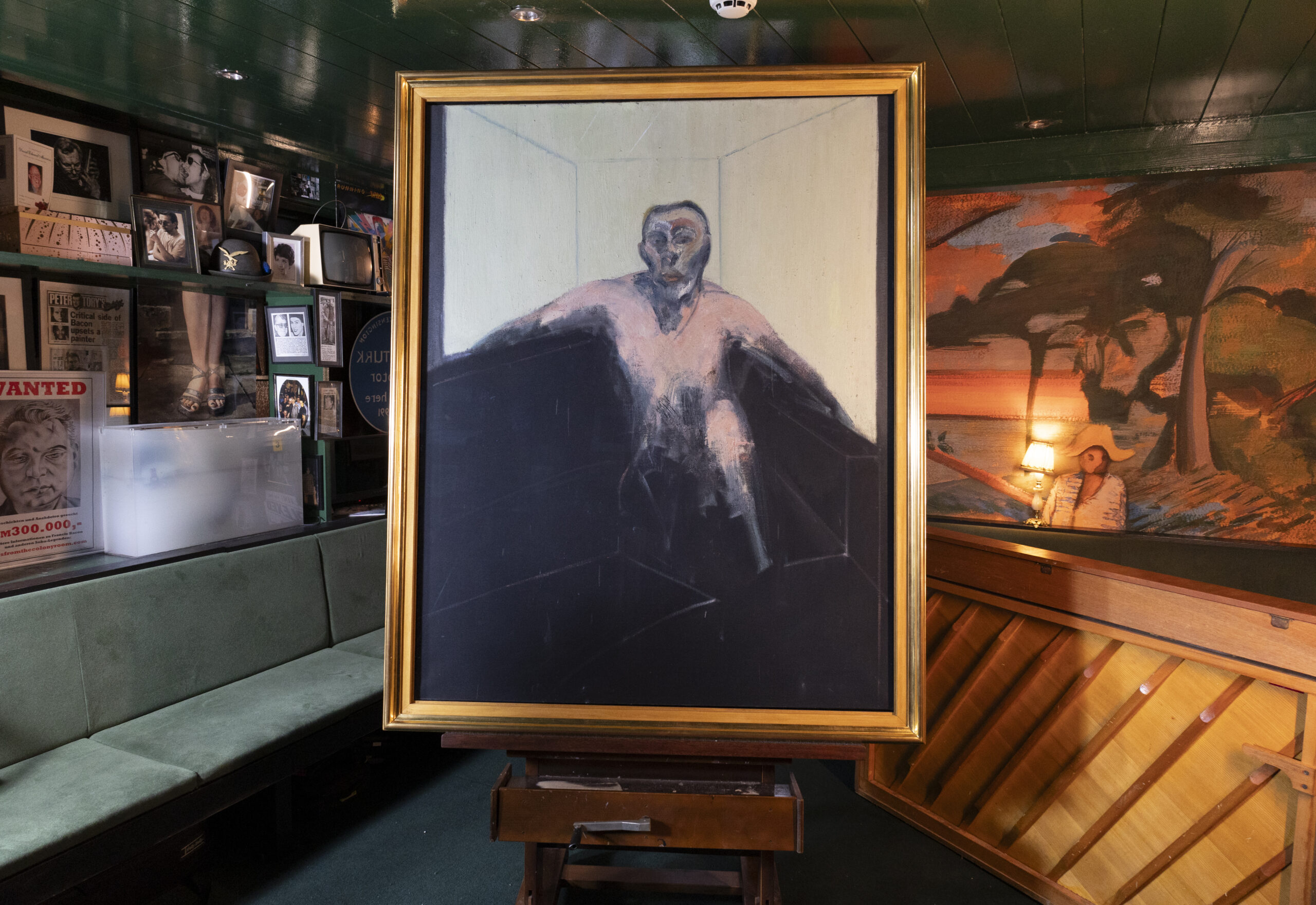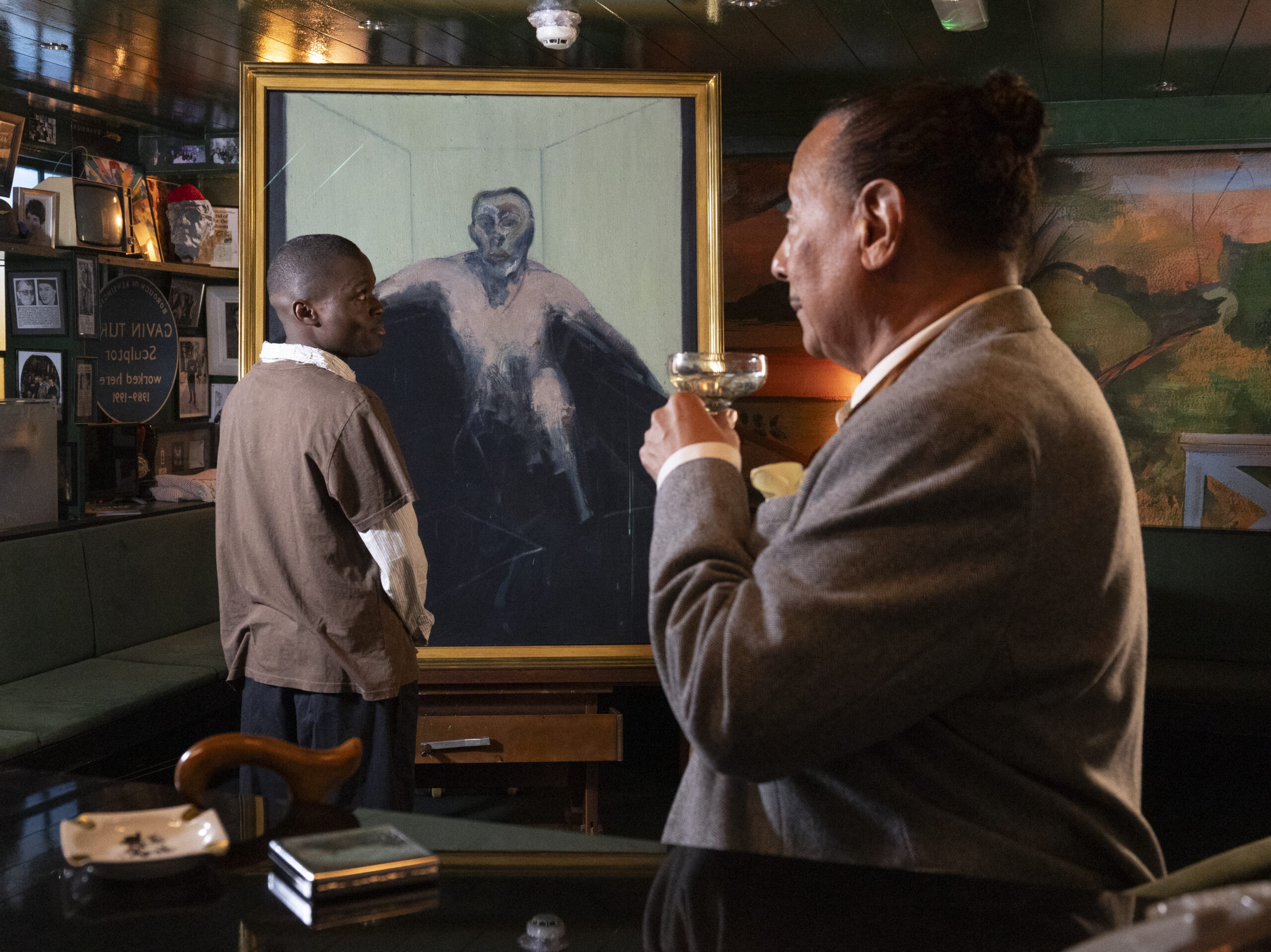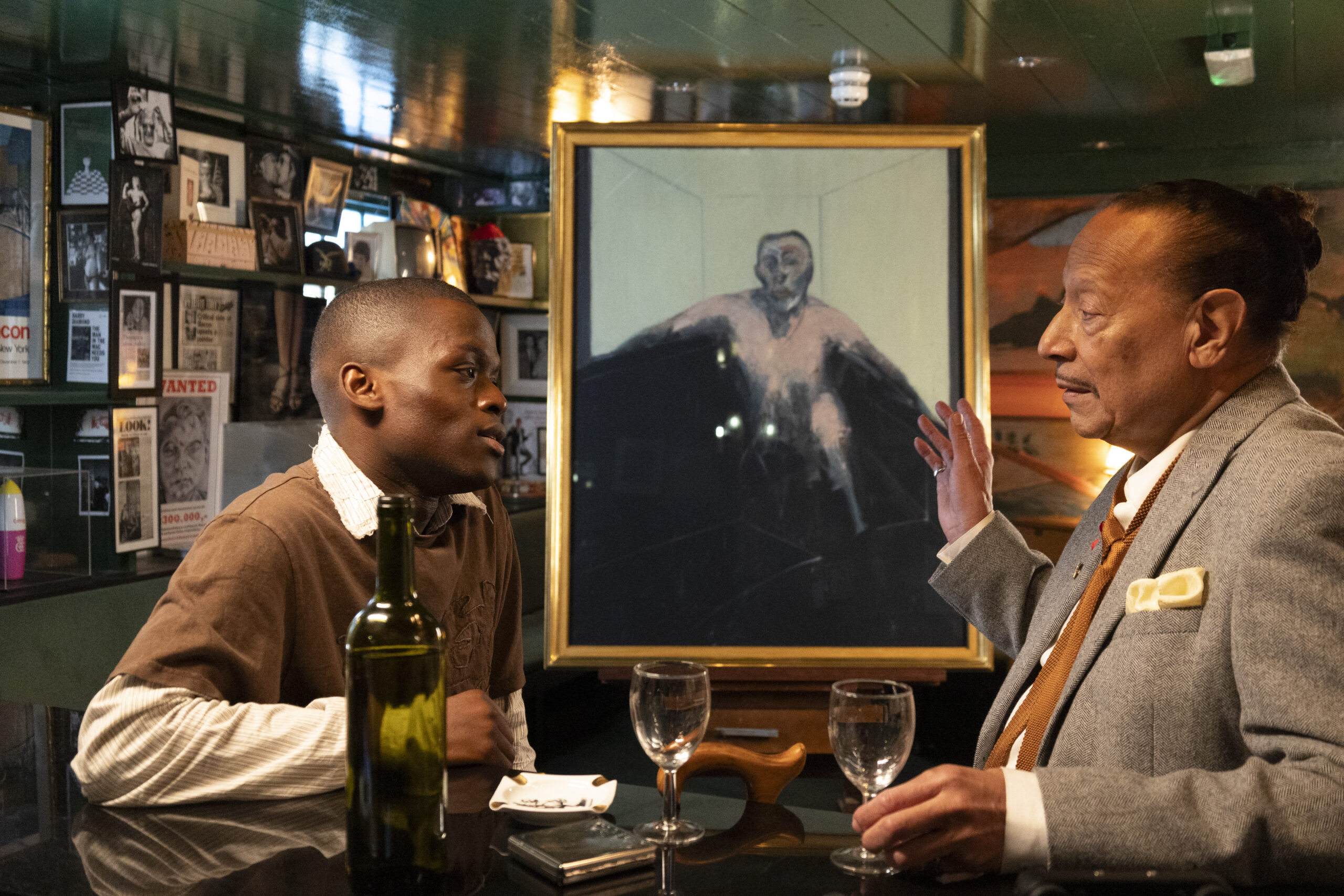
by Kate Wolstenholme & Beatrice Prutton
What if we understood art as living beings, able to share their wisdom, and make choices of their own?
Day Release, a project by the Sainsbury Centre, is taking art out of the museum and into the world to explore how society has changed since the works were created.
Francis Bacon’s portrait of his lover, Peter Lacy, recently chose to visit the artist’s old haunt, the Colony Room Club in London, where Francis and Peter first met and went on to build a chosen family of close friends from Soho’s artistic scene. There, the portrait met a young man struggling to be openly affectionate with his boyfriend in public, and a wiser, older man struggling to relate to him. The portrait himself explored how society has changed for the LGBTQIA+ community since the painting was last in Soho in the 1950s and helped the pair see eye to eye.
In this interview, we sat down with the portrait to get the scoop on its transformative day out of the museum, and what happens when we see art as alive.
Images throughout: © The Estate of Francis Bacon. All rights reserved. DACS 2025. Photos by Kate Wolstenholme.

Study for Portrait of P.L., no. 2 was painted by Francis Bacon of his partner Peter Lacy in 1957
Study for Portrait of P.L., no. 2: Needing the place to have beer on tap narrowed things down a little! Kiddin’. The Colony Room is the centre of my universe; it was where Francis met Peter, and that relationship led to my creation. The place was Francis’ North Star. His axis mundi. All roads lead to Colony Room. He spent so much of his life there, and the people that flocked to it became his family. I have so many of his smoke-hazed memories from the place that I felt like I knew it already, but I needed to see it for myself in the flesh – or in the canvas.
Study for Portrait of P.L., no. 2: What. A. Day. I couldn’t believe it. Freed from the museum wall to go anywhere I wanted! To be given that agency meant a lot. In all honesty there was only one place on Earth I would have chosen, and it was even more magical than I had hoped. I didn’t know who I would encounter there but meeting Marlon and Phillip changed me. They embodied everything I’ve seen and heard about in the last 50 years or so: societal progress and stubborn social hangups, all together in one room. I like to think I changed them, too.

In Day Release episode 1, Study for Portrait of P.L., no. 2 meets Marlon and Philip at the Colony Room Club in London’s Soho
Study for Portrait of P.L., no. 2: Picture it: for 50 years, you’ve seen photographs, heard stories of a place, learned all the inside jokes and funniest moments from your creator’s time there, and suddenly you’re in it. You can’t imagine their life before you existed until you’re in the room, and you can picture them laughing with each other and their friends, right there on that sofa, or propped up on that bar stool. It felt a lot like that; like those memories now have matter, a physicality to them, and the fibres of my canvas were buzzing. Suddenly all that love and pain that Francis poured into me was resonating in that pub, like an instrument singing when someone hums the right note.
Study for Portrait of P.L., no. 2: Francis had a strange relationship with us, his paintings. We were the physical manifestation of all his creative energy, all his talent that needed to be shared with the world, but we hold all his darkness as well. He had a habit of hurting us – slashing us with knives or burning us, sometimes destroying us completely – because he was hurting too. I still feel all that hurt, and it presents itself in my colours, my markings, all emanating that pain and that fear. It still lives in me. To meet Marlon, and to feel in some way that I could bond with him and help him, that was special. It may be true that I was created to hold someone’s pain, but my purpose can shift and change for each person I meet. My purpose on that day was to help someone see themself represented, to help them process their fears, and to help them find a resolution. Art doesn’t stay the same. We’re animate.

In this episode, Day Release explores how society has changed for the LGBTQIA+ community since the 1950s
Study for Portrait of P.L., no. 2: There are these rules we’ve internalised from the museum establishment (Don’t get too close. Don’t make any noise. Don’t ask questions), and they keep people closed off. I wish everyone would leave those rules at the entrance. Just sit with me – tell me what’s on your mind. Tell me what you’ve been up to since we last saw each other. Talk to me about the world. What’s in the news? I want to know.
All these things, they shape and change me, too. They transform the ways I present myself to you. And I’m growing older all the time, just like you. I won’t live forever, no matter how hard the conservators try, so I want to meet as many people as possible and learn new things through them along the way. And to be at home in the most radical museum in the world, where I’m understood as being alive, the Sainsbury Centre feels like the right place for me.
Watch Episode 1 of the Sainsbury Centre’s Day Release here.
The Sainsbury Centre is open Tuesday – Sunday. Pay what you can to enter. We recommend hugging a Henry Moore while you’re here- his sculpture ‘Mother and Child’ (1932) travels back to the artist’s birthplace of Castleford in Episode 2 of Day Release.
By subscribing you will be added to our Newsletter mailing list.
